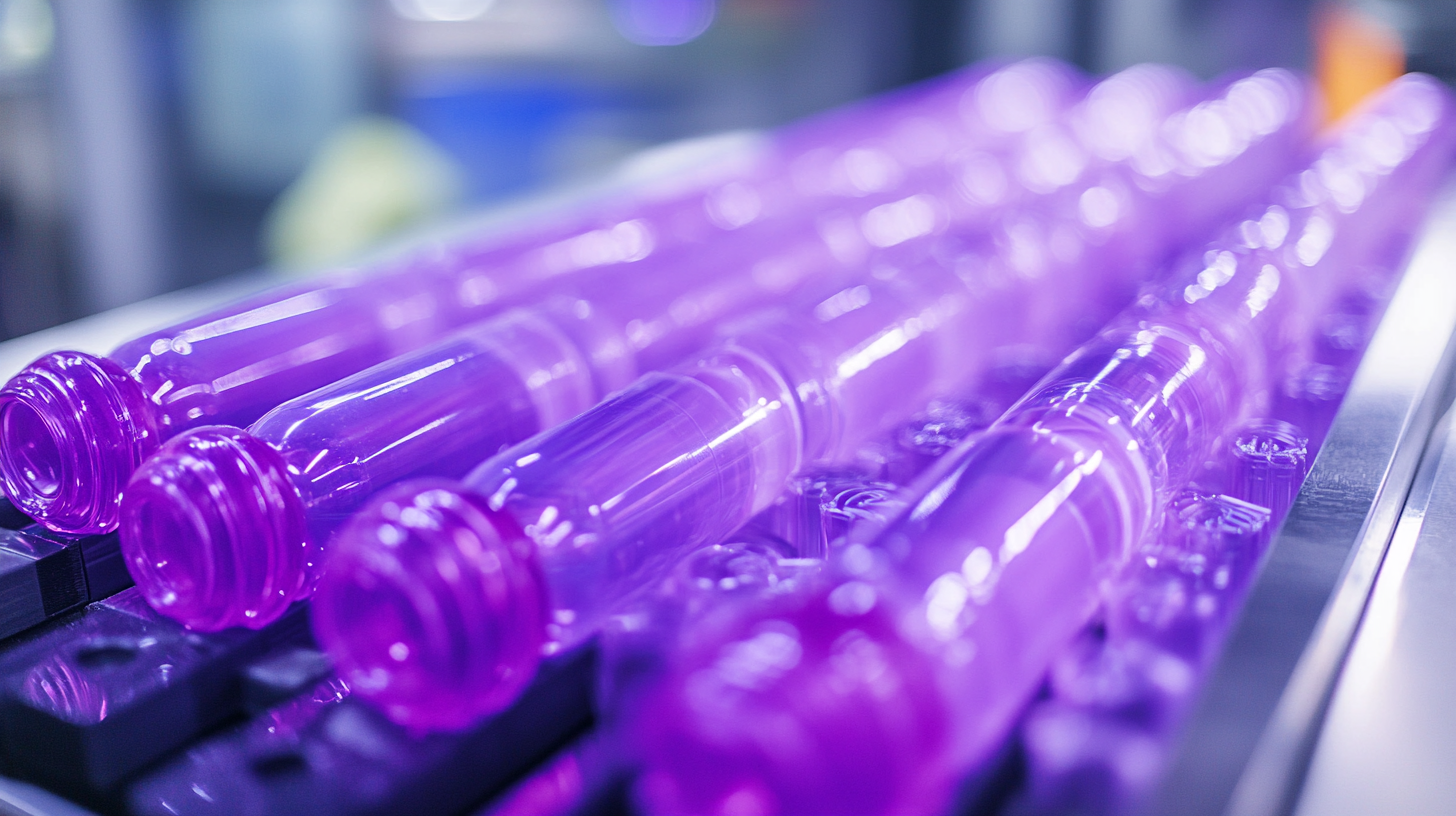Understanding Import and Export Compliance for Vibrating Dildo Manufacturing
In the ever-evolving landscape of adult product manufacturing, understanding import and export compliance is crucial for businesses involved in producing vibrating dildos. As demand for such innovative products continues to grow globally, manufacturers must navigate a complex web of regulations that govern how these items can be transported across borders. This not only involves adhering to safety standards and quality control measures but also ensuring compliance with the laws that vary significantly from one country to another.
Navigating the regulatory environment can be daunting, especially when it comes to products like vibrating dildos, which may face scrutiny due to their explicit nature. Companies must equip themselves with knowledge about tariff classifications, documentation requirements, and restrictions that could impact their operations. This blog aims to shed light on the essential aspects of import and export compliance, providing a roadmap for manufacturers to successfully market their vibrating dildos in international markets while mitigating the risk of legal issues and ensuring seamless trade.

Key Regulations Impacting Vibrating Dildo Exports and Imports
In the rapidly evolving landscape of international trade, vibrating dildo manufacturers must navigate a complex web of compliance regulations that significantly impact their import and export strategies. With the introduction of stringent tariffs and heightened scrutiny from various governments, understanding and adhering to regulations is more crucial than ever. Companies involved in the production and trade of vibrating dildos face unique challenges, given the nature of their products, which often encounter both legal and cultural barriers in different markets. The recent developments in international trade, notably the implications of tariffs and export controls, have reshaped supply chain strategies. Manufacturers must stay informed about the latest regulations, particularly those related to tariffs imposed by major economies. For instance, the U.S. tariffs have prompted many businesses to reassess their sourcing approaches in light of increased compliance risks. Moreover, as countries like China tighten controls over specific exports, including rare earth metals crucial for manufacturing, companies must ensure that their supply chains are not only compliant but also resilient. As trade negotiations evolve, especially between the U.S. and nations like India, manufacturers of vibrating dildos must be prepared for potential non-tariff barriers and regulations governing both agricultural imports and their own products. Keeping up with changes in trade policies is essential to avoid costly penalties and disruptions in production. Maintaining robust compliance measures will not only mitigate risks but also enhance a company's reputation in the competitive global market for adult products.

Navigating Customs Procedures for Adult Toy Product Compliance
Navigating customs procedures for the adult toy industry, particularly for products like vibrating dildos, requires a comprehensive understanding of both local and international compliance standards. In recent years, the global market for sexual wellness products has seen explosive growth, with estimates suggesting it could reach $39.7 billion by 2027. However, this growth is accompanied by a complex web of legal regulations that manufacturers must meet to ensure smooth customs clearance.
In India, for instance, stringent obscenity laws significantly impact the import and export of adult toys. Authorities enforce strict regulations concerning what constitutes obscene material, which can lead to challenges in compliance for manufacturers looking to penetrate the Indian market. As highlighted in recent analyses, any adult product entering India must be carefully assessed against these legal standards to avoid potential seizures and penalties, emphasizing the need for proper classification and documentation.
Moreover, effective compliance with customs procedures involves understanding tariff classifications and potential duties applicable to adult toys. A report by the International Trade Centre notes that misclassification can result in substantial fines and delays. It is vital for manufacturers to engage in thorough market research and work with customs experts to ensure alignment with evolving regulations, particularly in regions with stricter norms like India. By prioritizing compliance, manufacturers not only protect their products from legal pitfalls but also enhance their brand's reputation in a competitive global market.

Ensuring Product Safety Standards for International Trade
Ensuring product safety standards is crucial for the international trade of vibrating dildo manufacturing, as stringent compliance with import and export regulations can significantly mitigate risks associated with product safety and market acceptance. The importance of adhering to safety standards is underscored by recent measures announced under the International Plant Protection Convention, which emphasizes the necessity to prevent harmful pests from crossing borders and affecting global trade of agricultural products. Similar protective measures must be implemented within the adult toy industry to ensure that all products meet the required safety and quality benchmarks, thus fostering a reliable market environment.
Additionally, recent trends in international trade reveal that product safety is increasingly being scrutinized by regulatory bodies, particularly in relation to chemical use in manufacturing. Reports indicate that unresolved issues concerning chemical residues can lead to significant economic repercussions and undermine consumer trust. For instance, the advent of new standards concerning lithium batteries highlights the intersection of technology and safety, underlining the necessity for manufacturers to prioritize compliance as markets become more interconnected and regulations more stringent.
With the projected growth of the global adult toy market estimated to exceed $35 billion by 2024, manufacturers must navigate this landscape carefully, ensuring their products are not only innovative but also compliant with diverse international regulations. This is an opportunity to leverage advanced materials and manufacturing processes that adhere to safety standards, thereby enhancing product appeal in regional markets.

Understanding Tariffs and Duties on Vibrating Sex Toys
When it comes to the manufacturing and trade of vibrating sex toys, understanding tariffs and duties is essential for ensuring compliance while maximizing profitability. Tariffs are taxes imposed by governments on imported goods, which can significantly affect the final pricing of products. For manufacturers of vibrating dildos, knowing how these tariffs operate is critical to determining the cost-effectiveness of sourcing materials or finished products from foreign markets.
Duties, on the other hand, are often applied to specific categories of goods based on their classification within trade agreements. In the case of vibrating sex toys, understanding the harmonized system codes—used to classify products for trade purposes—can enable manufacturers to better navigate the complexities of international trade. This knowledge is vital, as misclassification may result in unforeseen costs or legal issues, further complicating the import and export process.
Furthermore, it is important for producers to stay abreast of any changes in trade laws and regulations, as these can directly influence tariffs and duties. Engaging with customs brokers or trade compliance professionals can help manufacturers effectively manage their responsibilities and avoid costly mistakes. By comprehensively understanding the financial implications of tariffs and duties, vibrating dildo manufacturers can make informed decisions that promote sustainable business practices while remaining competitive in the global market.
Best Practices for Documenting Compliance in Manufacturing and Shipping
When it comes to manufacturing and shipping vibrating dildos, understanding import and export compliance is critical. Documenting compliance effectively not only ensures adherence to legal standards but also minimizes the risk of shipment delays and fines. Establishing a robust documentation process begins with identifying all relevant regulations that apply to the product. This includes local laws, international trade agreements, and safety standards that vary across regions. Manufacturers should maintain precise records of product specifications, testing results, and quality assurance processes to demonstrate compliance.
Once regulations are understood, creating a comprehensive shipment documentation strategy is essential. This includes accurate invoices, packing lists, and certificates of origin, which should clearly detail the product, its intended use, and its compliance status. Moreover, it is crucial to stay updated on any changes in regulations or international trade policies, as these can impact the necessary documentation for shipping products abroad. Establishing a systematic review process to regularly check documentation for accuracy and relevance can help streamline operations and enhance compliance.
Additionally, incorporating technology such as compliance management software can significantly aid in tracking and managing documentation throughout the manufacturing and shipping processes. Such tools can automate reminders for regulatory updates and simplify record-keeping. Ultimately, ensuring that documentation is thorough, accurate, and readily accessible not only facilitates smoother international transactions but also fosters trust with clients and regulatory bodies alike.

